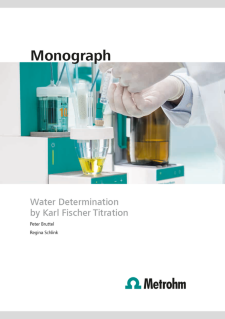Karl Fischer (KF) titrators are used for measuring both free and bound water content. With the KF method, you can, for instance, determine the surface water on crystals as well as the water contained within the crystals.
- KF titrators can be used for moisture determination (i.e., water content determination) in all sample types: liquids, solids, slurries, and gases
- KF titrators are applied over a wide concentration range from ppm up to 100%
- KF titrators are fast and highly selective
- KF titrators supply reproducible and correct results
